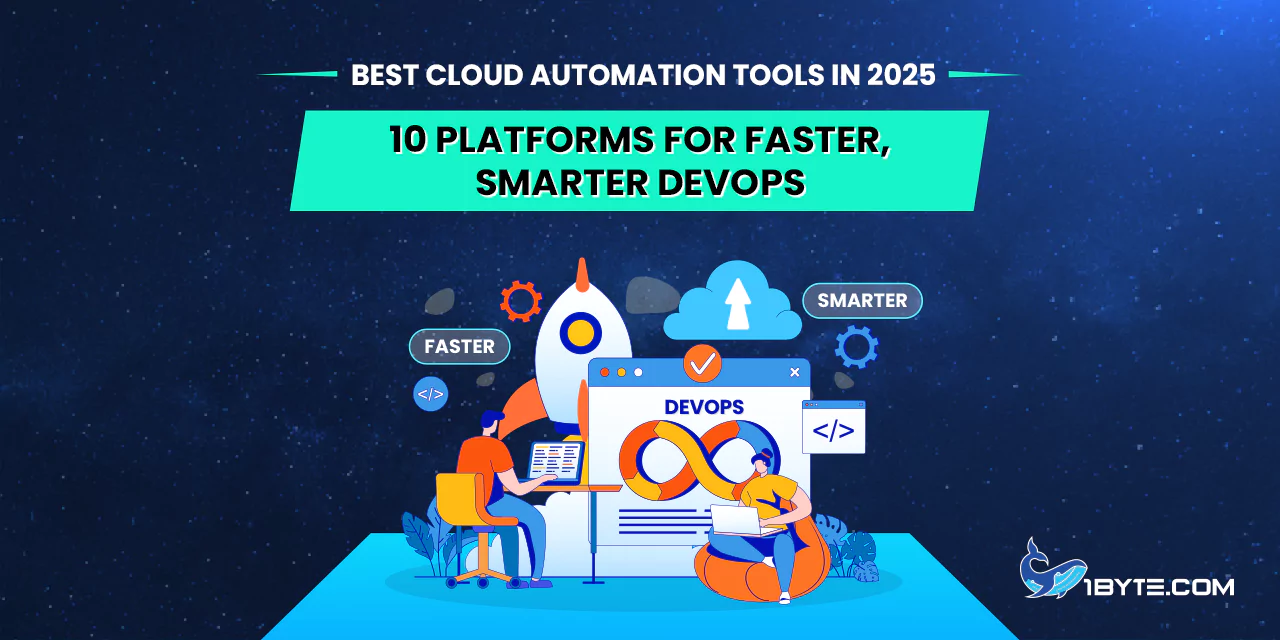Cloud automation tools are now central to how DevOps teams build, deploy, and manage applications. Those solutions relieve engineers of tedious work and make complicated cloud environments manageable. They enable teams to stop performing mundane tasks related to infrastructure provisioning, configuration and deployment. Whether an organization is operating in AWS, Azure, Google Cloud, or on multiple clouds, the proper tools offer predictability, agility and stability. Automation of cloud solutions in 2025 boasts a much wider range of expressive possibilities than ever, providing organizations with some excellent tools to optimize their workflow and scale accordingly. To know more read this article on 1Byte.
The State of Cloud Automation Tools
Cloud automation tools help DevOps teams work faster by automating cloud workflows. These tools reduce manual tasks and errors, and they scale operations. In fact, many organizations now adopt cloud automation: Gartner predicts more than 85% of companies will have a cloud-first principle by 2025 to orchestrate workloads. The market itself is booming. Global analysis shows the cloud automation market will jump from about $200.5 billion in 2024 to $233.5 billion in 2025 (a 16.5% growth rate). Businesses embrace automation to improve speed and consistency, helping teams deploy code much faster while cutting waste. For example, as many as 60% of firms now include infrastructure automation in their DevOps pipelines, boosting deployment effectiveness by about 25%. These trends mean modern DevOps relies on robust automation platforms more than ever.
- Improved quality: Automation enforces consistent configurations across all environments. This reduces human errors and drift.
- Faster innovation: Engineers spend less time on routine tasks. They can focus on new features. Automation shortens release cycles.
- Lower costs: Automated tools help right-size resources and shut down idle ones. This cuts waste (Flexera reports ~32% of cloud budgets were wasted in 2022) and lowers bills.
Teams see real benefits: a study found mature DevOps teams report 20–30% cost reductions from automation and faster time-to-market. Automation also speeds delivery: 74% of enterprises using DevOps doubled their release rate thanks to CI/CD pipelines and IaC processes. In short, cloud automation tools unlock agility and efficiency across the organization.
FURTHER READING: |
| 1. Cloud Ecommerce: The Future of Online Retail in 2025 |
| 2. Hybrid Cloud Infrastructure Explained: A Comprehensive Guide |
| 3. What is Private Cloud Storage? A Closer Look |
Top 10 Cloud Automation Platforms
Organizations choose cloud automation tools that match their needs. Below are 10 leading platforms in 2025, covering infrastructure provisioning, configuration management, CI/CD, and orchestration. Each enables faster, smarter DevOps by automating key cloud tasks.
1. Terraform
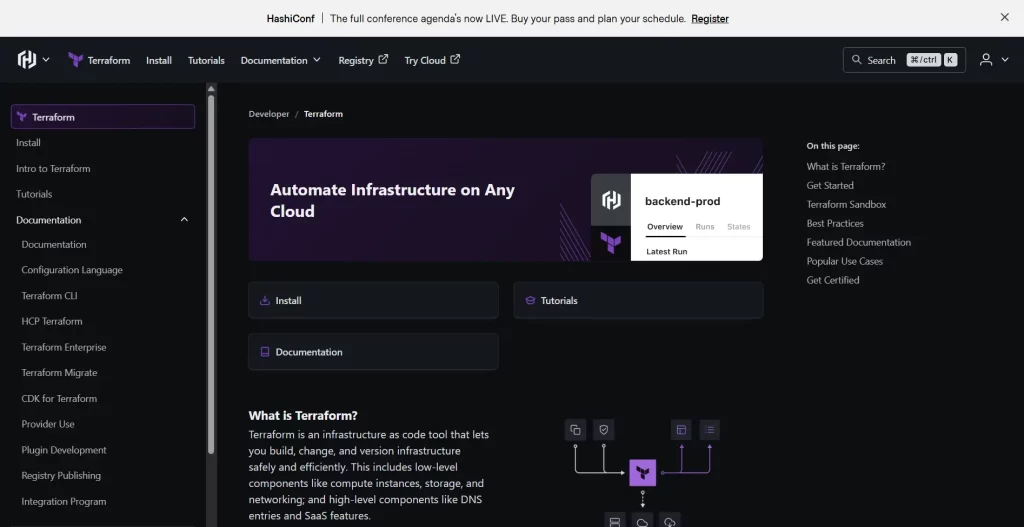
Terraform (developed by HashiCorp) is one of the most popular Infrastructure as Code (IaC) solutions to multi-cloud provisioning. It involves declarative configuration files (HCL language) to enable that deployments are predictable and version-controlled. There are various back-end providers supported by Terraform such as AWS, Azure, Google Cloud and even on-premise systems and the syntax is all the same. Teams share code using modules to write code in order to reuse code and to tracke changes in a state file. This allows DevOps to manage the same environments in dev, test and production. Some of the main features are multi-cloud support and a huge plugin ecosystem. Case in point, we could have Terraform build AWS EC2 instances, Azure VNets and GCP projects within a single plan. It also automatically determines the correct order to execute operation in, and applies changes safely. Such a degree of automation reduces manual effort and vagueness, meaning that teams are able to scale cloud infrastructure at scale.
2. Pulumi
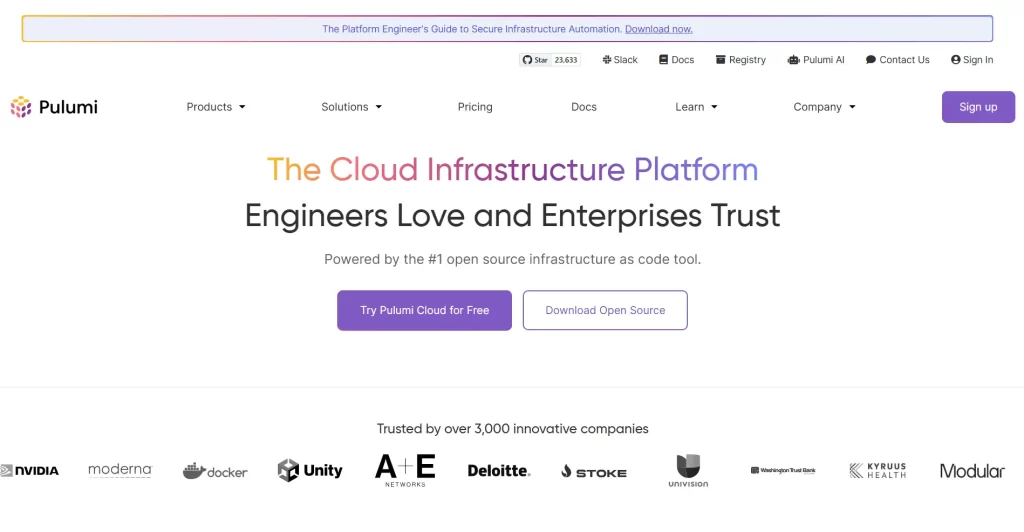
Pulumi is a new-age IaC framework that allows developers to operate using the languages they are familiar with (Python, TypeScript, Go, .NET, etc) to code infrastructure. Contrary to the features of many tools, written in YAML or DSLs, Pulumi is written in general purpose code. As such flexibility entails, engineers can use loops, conditions, and libraries in infra code. The Pulumi provisions cloud and on-prem resources, Kubernetes clusters, or serverless services using code that you write in standard IDEs. It then automates the deployment by communicates with the cloud APIs. Teams can use Pulumi debugging and testing tools to help debug as early as possible. As an example, a developer might test Pulumi code in unit tests the same way as any other software. Pulumi enables everyone involved to use actual programming languages: it brings cross-talk between dev and ops teams and minimizes interruptions. Pulumi is in effect that it automates infrastructure creation but with all the control of software engineering.
3. AWS CloudFormation
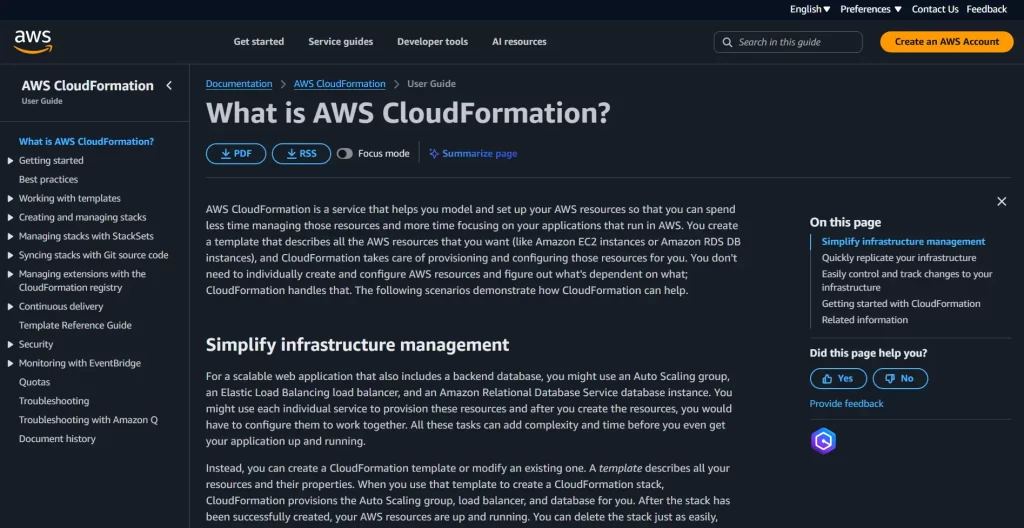
CloudFormation is a self-contained IaC system of Amazon to AWS. It allows you to outline your whole AWS stack (EC2 instances, databases, VPCs and so forth) in JSON or YAML templates. CloudFormation would then automate the provisioning, updates and deletion of those resources. It can roll out in complex ways because it ties in well with AWS. As an example, a running application can be updated by updating the CloudFormation template; a preview of the changes and then update can be applied with little to no downtime. It also manages dependencies: say your app requires a database, a web sever and a load balancer, CloudFormation creates these in the right sequence and sets them to connect with each other. This practically implies that infrastructure can be from end to end versioned and replicated in other AWS environments. Quite a number of teams that work with AWS use CloudFormation as a way to automate all of their cloud resources, to length the console settings.
4. Google Cloud Deployment Manager
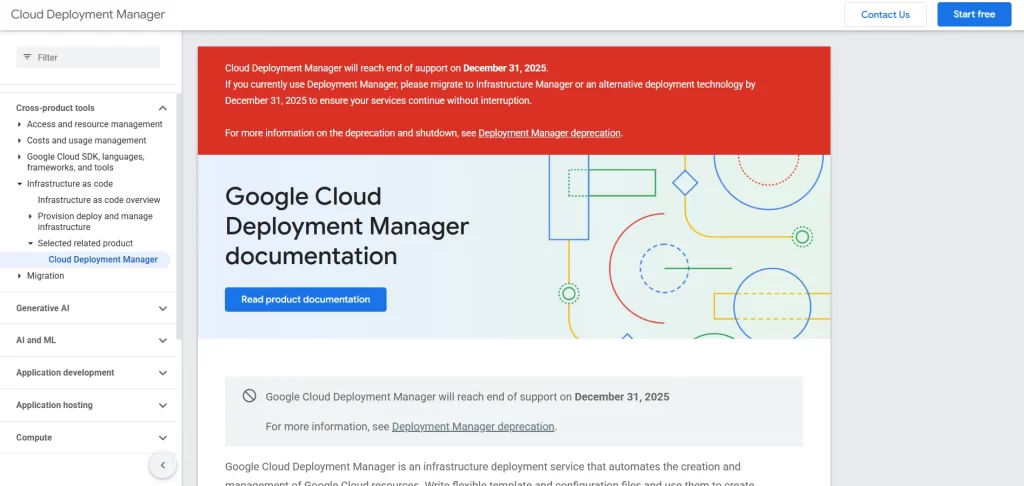
Deployment Manager is Google cloud equivalent of infrastructure deployment. It is able to create and configure Google Cloud resources (VMs, networks, storage buckets and so on) using YAML or Python templates. Teams produces what they want their GCP environment to be and Deployment Manager does it. As an example: a single Deployment Manager file not only spins up multiple Compute Engine instances but also spins up a Kubernetes Engine cluster and Cloud SQL databases in the same operation. The service also measures change, hence updates can be repeated Although Deployment Manager is not as cited as other tools, it is fully native to GCP: it integrates with GCP console, and APIs so that all changes in the templates will propagate to the production environment. The automation will allow teams to scale their large Google Cloud environments with methodical consistency rather than clicking around manually
5. Azure DevOps / ARM Templates
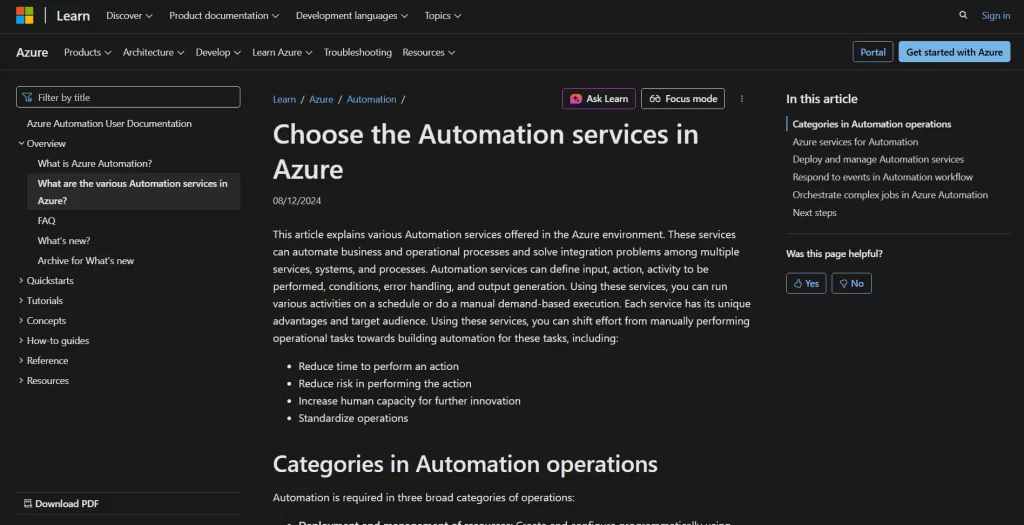
Microsoft Azure multiple automation tools are available. Az DevOps (was VSTS/TFS) has a complete suite of CI/CD pipelines, repos and artifact structures. Automates cloud app builds, test and release to Azure or any cloud. Bicep and Azure Resource Manager (ARM) templates enable the provisioning of Azure infrastructure as code use in JSON or, more recently simple syntax. Teams can use Azure DevOps and ARM/Bicep to entirely automate the provisioning of Azure resources as well as delivery of applications. An example is that a pipeline could be configured to execute Terraform or ARM templates to reconstruct infrastructure and then be configured to deploy code onto that infrastructure–without manual intervention. Azure Automation by Microsoft is also available to automate scriptable tasks (e.g. scaling and backups). Each of these Azure tools are components of an automated cloud deployment process that is Microsoft friendly.
6. Ansible
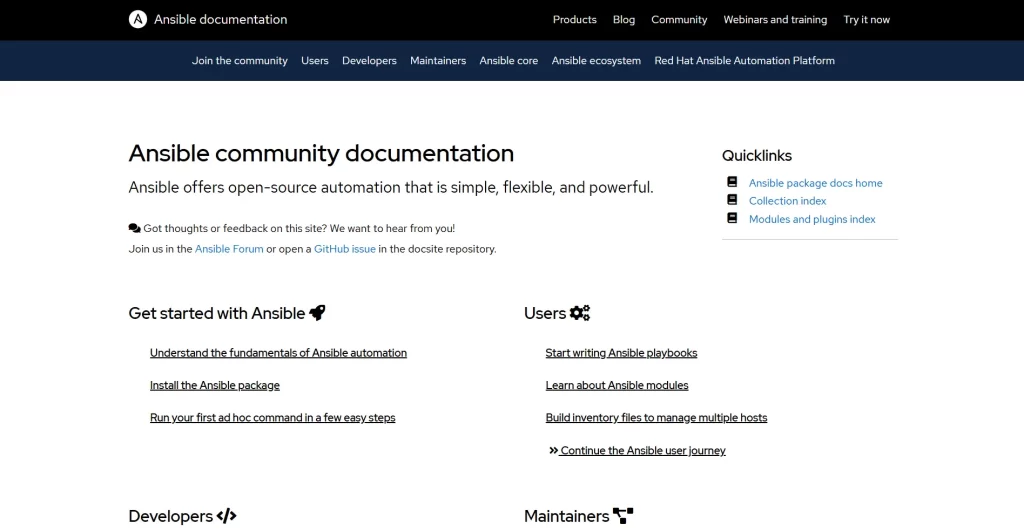
Ansible (by Red Hat) is a common configuration management and automation utility. It allows Amazon to automate things across Machines with simple YAML playbooks. Remarkably, Ansible is an agentless tool: it communicates with servers in question through SSH or WinRM, hence, installation of agent software is not required to each node. Playbooks can be used to install software or set up settings or deploy complicated projects. As an example, there may be a single playbook to install and bootstrap a web server cluster, configure load balancers and deploy an application all in a single operation. The vast test of built-in modules of Ansible are able to control cloud resources as well. It is able to invoke AWS, Azure or GCP modules to invoke instances or services as a part of a playbook. This flexibility allows DevOps teams to automate the infrastructure configuration and app configuration in a similar way. Ansible has been lauded by many teams because playbooks are YAML, thus human readable and maintainable. Realistically, Ansible automates routine tasks with the cloud or on-prem, thereby allowing engineers to concentrate on design as opposed to single commands.
7. Chef
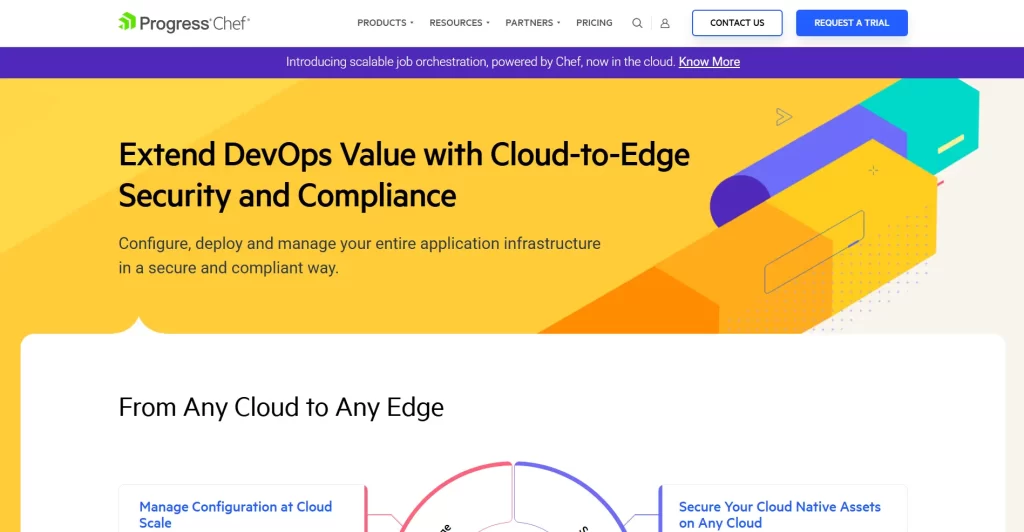
Chef (owned by Progress) is a mature automation platform that uses Ruby-based “recipes” for configuration. In Chef, you write code that describes the desired state of your systems (packages to install, services to run, files to configure). Chef’s server-client model ensures every node converges to that state automatically. For example, a Chef cookbook might enforce that each node has the latest version of nginx and a specific configuration file. Chef continuously applies these policies so drift is corrected. It integrates well into DevOps pipelines: Chef recipes can be triggered as part of deployment, or run automatically on a schedule. The declarative approach of Chef means you describe the “what,” and Chef handles the “how,” reducing human error. Large enterprises often use Chef to automate scale-outs of hundreds or thousands of servers (physical or cloud) consistently, knowing Chef will manage dependencies and updates reliably.
8. Puppet

Puppet (by Perforce) is also a commonly used configuration management tool. Similar to Chef, Puppet is also based on a declarative language (custom DSL) to specify the desired result of infrastructure. Puppet will then enforce those states across all of the managed nodes and checking in every so often making corrections any deviations. Puppet manifest might then be used to always have the correct set of packages installed on each of the systems, the correct user accounts, and services running on them. Puppet is also scaleable and compliance oriented: you can audit what is happening in configuration changes and connect to reporting tools. It is also related to CI/CD: Puppet is capable of pulling configuration out of Git repositories and applying that alongside code deployments. Puppet is often utilized by various organizations in the process of automation with the purpose of patching, updating configurations and having environments that are identical. Its agent-master design (centralized Puppet Master) enables the ability to have fine-grained control and reporting be easy to do and enable continuous automation of thousands of machines.
9. Jenkins
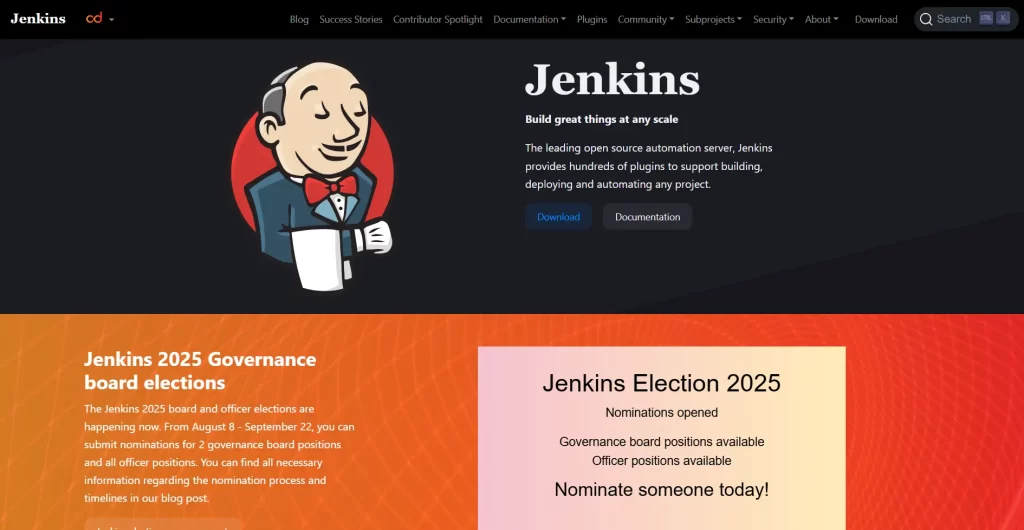
Jenkins is a free-source automation server that is commonly used in CI/CD pipeline. It organizes such activities as creating the code, running the tests, and deploying the artifacts. Jenkins has more than 1,500 plugins to integrate with almost every DevOps tool: version control, Docker, Kubernetes, cloud providers and so on. Teams delineate in Jenkins so-called jobs, which can be automatically executed following a code commit, through a set of unit tests and subsequently to staging or production. As an example, a Jenkins pipeline may pull code in GitHub, build containers, push to a registry and launch new instances on AWS – all automatically. Jenkins scales by replication of build node: you can add new machines to perform parallel builds or tests. The automation of the pipeline is very useful as it makes the cycle of delivery much faster since nothing is done manually. In 2025 Jenkins is still a staple as it allows DevOps to automate all of the steps taken before releasing the code.
10. Kubernetes

Kubernetes (K8s) is the most popular container orchestration tool, and an important source of automation of cloud-native applications. Kubernetes automates deployment, scaling and management of container workloads. It orchestrates containers through a cluster, automatically recovers failed containers and offers load balancing and Rolling Updates. To illustrate, you can create a new microservice, the Kubernetes feature can be used to spawn the number of pods needed, direct traffic, and gradually release a new version even spread over the pods without any downtime. It also offers auto-scaling: pods can be scaled up or down as demand falls or rises. Kubernetes can be run on any cloud or on-prem and hence portability of deployment. Noteworthily, Kubernetes entwines with numerous DevOps processes. Additional tools such as Helm and Operators automate yet more actions (e.g. provisioning a database in a cluster). Kubernetes in practice allows teams to outsource operations: can delegate operations to the platform: deployments are triggered by a single command or via CI/CD. This leaves developers free to iterate more rapidly, with the knowledge that networking, scaling and recovery are covered by Kubernetes.
Leverage 1Byte’s strong cloud computing expertise to boost your business in a big way
1Byte provides complete domain registration services that include dedicated support staff, educated customer care, reasonable costs, as well as a domain price search tool.
Elevate your online security with 1Byte's SSL Service. Unparalleled protection, seamless integration, and peace of mind for your digital journey.
No matter the cloud server package you pick, you can rely on 1Byte for dependability, privacy, security, and a stress-free experience that is essential for successful businesses.
Choosing us as your shared hosting provider allows you to get excellent value for your money while enjoying the same level of quality and functionality as more expensive options.
Through highly flexible programs, 1Byte's cutting-edge cloud hosting gives great solutions to small and medium-sized businesses faster, more securely, and at reduced costs.
Stay ahead of the competition with 1Byte's innovative WordPress hosting services. Our feature-rich plans and unmatched reliability ensure your website stands out and delivers an unforgettable user experience.
As an official AWS Partner, one of our primary responsibilities is to assist businesses in modernizing their operations and make the most of their journeys to the cloud with AWS.
Conclusion
Cloud automation tools have transformed DevOps in 2025. All the platforms mentioned above allow the teams to deploy reliably, manage their resources effectively and iterate fast. These tools -IaC with Terraform and orchestration with Kubernetes- do the same, but in increasingly large cloud environments. With a suitable combination of automation, the companies experience reduced cycle times, less error and huge a savings that ensure that they stay competitive in an evolving market.

